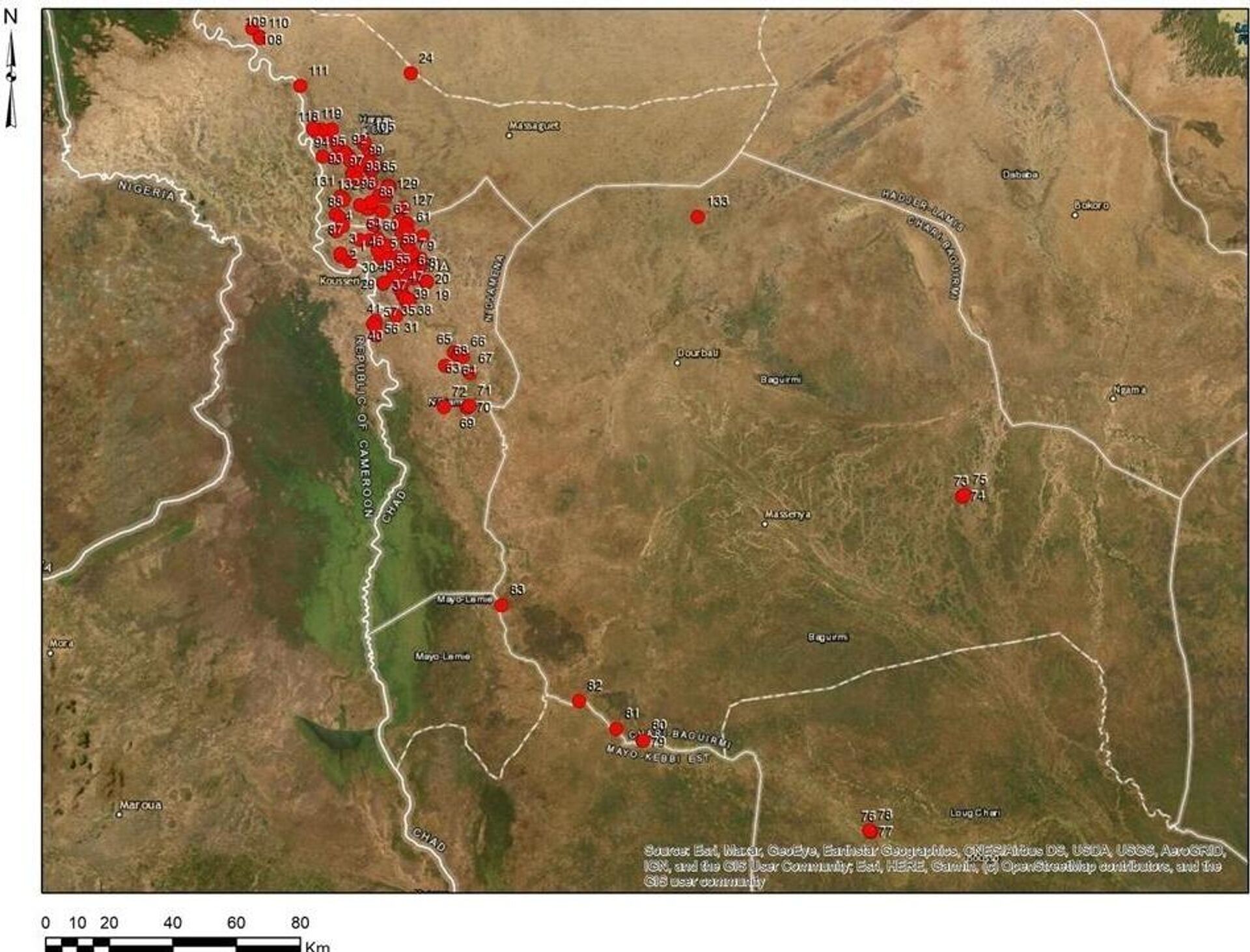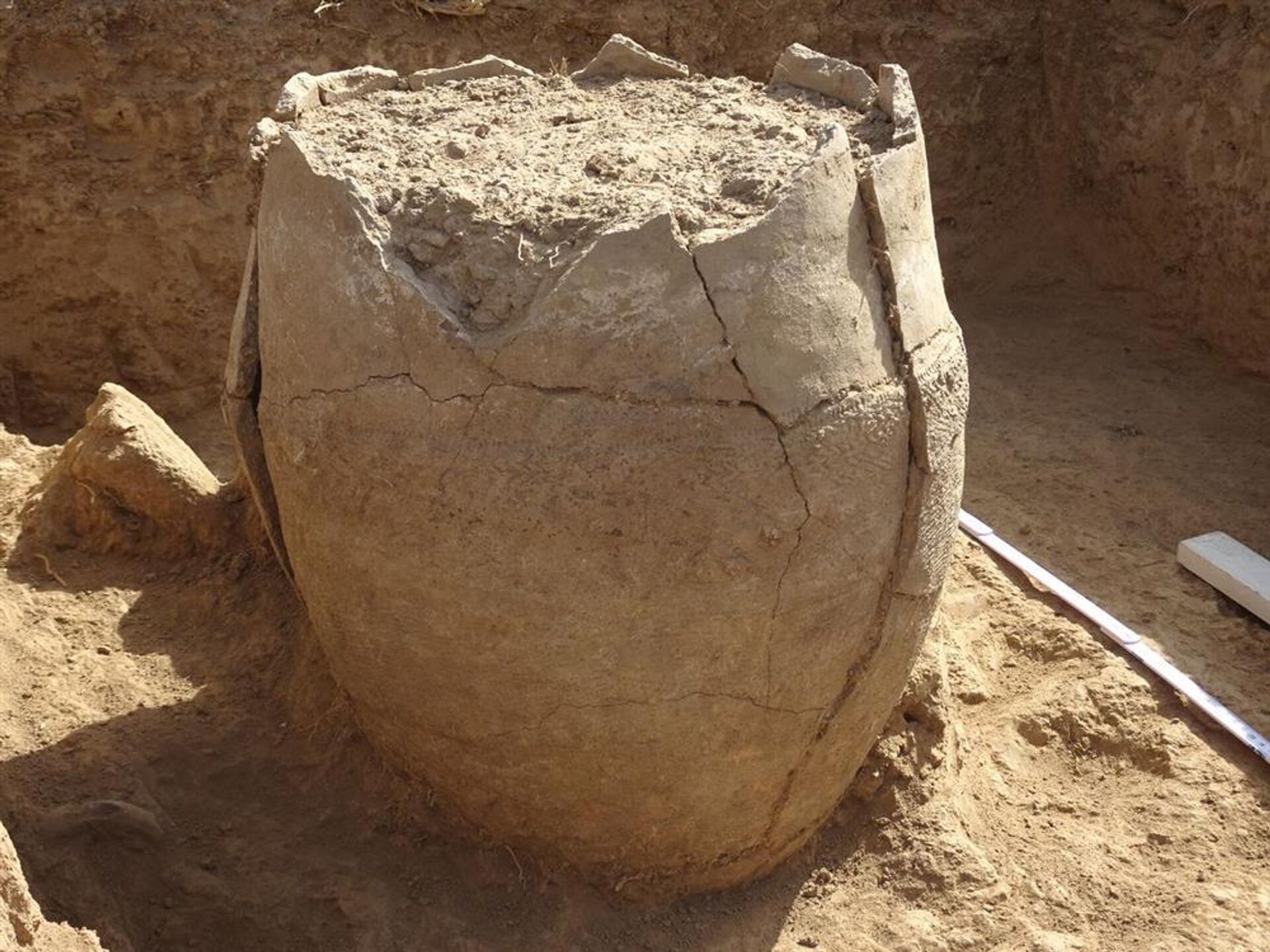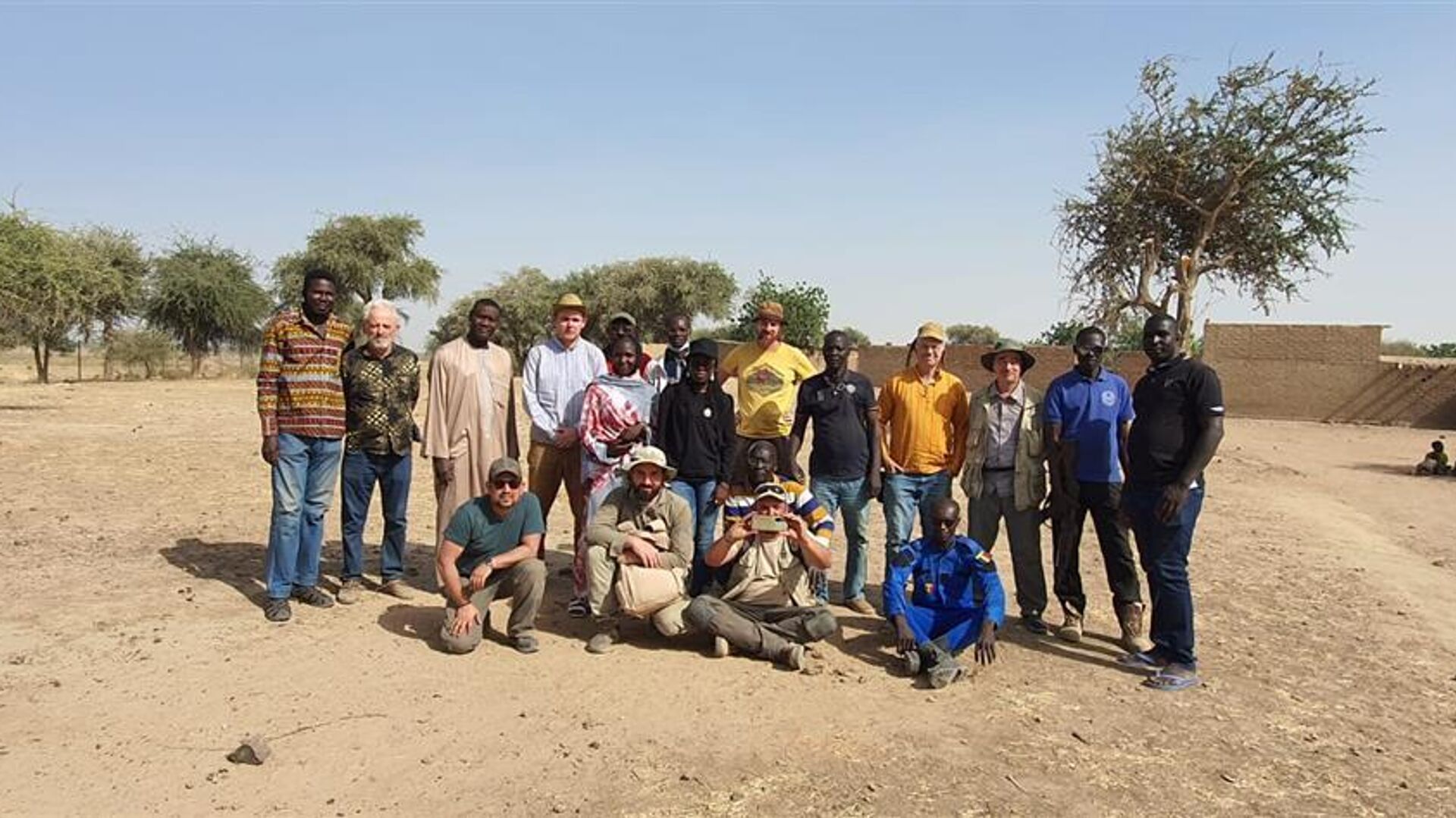https://sputnikglobe.com/20230305/exploring-ancient-africa-russian-expedition-to-chad-discovers-sao-remains-1108068417.html
Exploring Ancient Africa: Russian Expedition to Chad Discovers Sao Remains
Exploring Ancient Africa: Russian Expedition to Chad Discovers Sao Remains
Sputnik International
Archaeologists from the Russian Academy of Sciences' Institute of Archaeology have participated in an international expedition to Chad to excavate two settlements of the ancient Sao civilization.
2023-03-05T14:11+0000
2023-03-05T14:11+0000
2023-03-05T15:20+0000
africa
central africa
chad
archeology
russian academy of sciences (ras)
institute of archeology
civilization
ancient civilization
https://cdn1.img.sputnikglobe.com/img/07e7/03/05/1108068709_79:0:922:474_1920x0_80_0_0_ba9971933653377429ecb10dd8827437.jpg
Archaeologists from the Russian Academy of Sciences' Institute of Archaeology have participated in an international expedition to Chad to excavate two settlements of the ancient Sao civilization. During the expedition, they discovered vessels, ceramics, a clay sculpture, remains of ovens and other artifacts, the institute stated.The international expedition carried out its activities in the vicinity of the capital city of N'Djamena in February. Apart from Russian experts, it included scientists from the multinational Center for National Development Studies (CNRD), the National Museum and the Universities of Doba and Sarh (Chad), and the Center for African Studies of the University of Porto (CEAUP, Portugal).The expedition focused on cultural monuments of the legendary Sao civilization. The modern Kotoko people, an ethnic group that lives in such countries as Cameroon, Chad and Nigeria, claim ethnic descent from the ancient Saos. Local myths and legends describe the Sao, who inhabited the area to the south of Lake Chad, as giants - very tall people with superhuman strength. During one week, the scientists conducted an archaeological investigation at two settlements, Toukra Dassa 1 and 2, located on the eastern outskirts of the village of Toukra, a southern suburb of N'Djamena, on the left bank of the river Chari.At the settlement of Toukra Dassa 1, during the excavations, the archaeologists discovered ceramic material, bones of animals and fish, and several other artifacts. It was noted that among the findings, there was a clay figurine of an animal, made in the style of terracotta sculpture of the Sao culture. Apart from that, a whole ceramic vessel with a typical Sao ornament in the form of wavy lines was unearthed at one of the excavation sites. According to the institute's report, at the Toukra Dassa 2 settlement, scientists found at least eleven vessels, which were fixed vertically in the cultural layer. Among the findings were ovens made of baked clay, remnants of ceramic vessels, including a burial urn, in which a child was entombed. The researchers noted that the samples of anthropological, zoological and botanical materials, as well as ceramic fragments of funeral urns will be examined and analyzed by specialists. It is expected that the radiocarbon analysis of the selected samples will allow them to identify the age and chronology of the discovered antiquities.The sites of the Sao culture were first discovered at the beginning of the 20th century by French researchers and were actively explored during the first half of the last century. Since then, many long-term settlements of the Sao civilization have been found. The results of excavations showed traces of farming, fishing, pottery and metallurgy. Located to the south of Lake Chad, on the territory of the modern countries Nigeria, Cameroon and Chad, these settlements occupy isolated hills of natural and artificial origin in the valleys of the Logone and Chari rivers.
africa
central africa
chad
Sputnik International
feedback@sputniknews.com
+74956456601
MIA „Rosiya Segodnya“
2023
News
en_EN
Sputnik International
feedback@sputniknews.com
+74956456601
MIA „Rosiya Segodnya“
Sputnik International
feedback@sputniknews.com
+74956456601
MIA „Rosiya Segodnya“
russian academy of sciences' institute of archaeology, russia, chad, archaeology, archaeologists, sao civilization
russian academy of sciences' institute of archaeology, russia, chad, archaeology, archaeologists, sao civilization
Exploring Ancient Africa: Russian Expedition to Chad Discovers Sao Remains
14:11 GMT 05.03.2023 (Updated: 15:20 GMT 05.03.2023) The Sao civilization was an ancient culture that once flourished in Central Africa from the sixth century BC to as late as the 16 century AD. It settled along the Chari River, in an area that encompasses several countries, including Chad, Cameroon and Nigeria. Much is still unknown about the culture due to a lack of written sources.
Archaeologists from the Russian Academy of Sciences' Institute of Archaeology have participated in an international expedition to Chad to excavate two settlements of the ancient Sao civilization. During the expedition, they discovered vessels, ceramics, a clay sculpture, remains of ovens and other artifacts, the institute stated.
The international expedition carried out its activities in the vicinity of the capital city of N'Djamena in February. Apart from Russian experts, it included scientists from the multinational Center for National Development Studies (CNRD), the National Museum and the Universities of Doba and Sarh (Chad), and the Center for African Studies of the University of Porto (CEAUP, Portugal).
The expedition focused on cultural monuments of the legendary Sao civilization. The modern Kotoko people, an ethnic group that lives in such countries as Cameroon, Chad and Nigeria, claim ethnic descent from the ancient Saos. Local myths and legends describe the Sao, who inhabited the area to the south of Lake Chad, as giants - very tall people with superhuman strength.
"The aim of the expedition was to explore several sites of the Sao culture, which were subjected to anthropogenic impact, in order to determine their potential for further study," the archaeologists explained.
During one week, the scientists conducted an archaeological investigation at two settlements, Toukra Dassa 1 and 2, located on the eastern outskirts of the village of Toukra, a southern suburb of N'Djamena, on the left bank of the river Chari.
At the settlement of Toukra Dassa 1, during the excavations, the archaeologists discovered ceramic material, bones of animals and fish, and several other artifacts. It was noted that among the findings, there was a clay figurine of an animal, made in the style of terracotta sculpture of the Sao culture. Apart from that, a whole ceramic vessel with a typical Sao ornament in the form of wavy lines was unearthed at one of the excavation sites.
According to the institute's report, at the Toukra Dassa 2 settlement, scientists found at least eleven vessels, which were fixed vertically in the cultural layer. Among the findings were ovens made of baked clay, remnants of ceramic vessels, including a burial urn, in which a child was entombed.
"The burial urn was placed in a destroyed furnace, next to which an ornamented leg from a clay table was found [...]. There was a child of 5-9 years old, whose body laid on the bottom of the vessel in the fetal position. Around the child's neck there was a necklace of six carnelian beads," the archaeologists said.
The researchers noted that the samples of anthropological, zoological and botanical materials, as well as ceramic fragments of funeral urns will be examined and analyzed by specialists. It is expected that the radiocarbon analysis of the selected samples will allow them to identify the age and chronology of the discovered antiquities.
The sites of the Sao culture were first discovered at the beginning of the 20th century by French researchers and were actively explored during the first half of the last century. Since then, many long-term settlements of the Sao civilization have been found. The results of excavations showed traces of farming, fishing, pottery and metallurgy. Located to the south of Lake Chad, on the territory of the modern countries Nigeria, Cameroon and Chad, these settlements occupy isolated hills of natural and artificial origin in the valleys of the Logone and Chari rivers.






